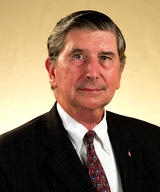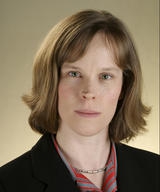There’s an old saying: “Out with the old, and in with the new.” "Indispensable Counsel" suggests a new turn of this old phrase for corporate law practitioners, jurists, educators, students, and anyone interested to learn about this dynamic field of law: Authors E. Norman Veasey and Christine T. Di Guglielmo could have called their new phrase “Bring in the new, and build on the old.” Instead, they deftly nestled it in as their subtitle: “The Chief Legal Officer in the New Reality.”
To see this juxtaposition of the established and the emerging, one need go no further than to the authors’ biographies, found where bios as impressive as these should be: in the front of the book: Norman Veasey is the former Chief Justice of Delaware, a position he held for 12 years. Today, he is a senior partner at Weil, Gotshal & Manges LLP. Chief Justice Veasey graduated from Dartmouth College (1954) and the University of Pennsylvania Law School (1957), where he served as Senior Editor of the Law Review. His service to his profession is well-known and often given special recognition: high awards and honors detailed in the book, but too numerous to mention here.

Christine Di Guglielmo is an associate with Weil, Gotshal & Manges. Before joining the firm, she served as Justice Veasey’s judicial clerk and frequently writes with him today. She is active on the Delaware Board on the Unauthorized Practice of Law, the Child Placement Review Board, and the Women and Law Section of the Delaware State Bar. Ms. Di Guglielmo graduated from Brown (1998) and University of Pennsylvania Law School (2003, summa cum laude), where she served as executive editor of the Law Review.
What is this “New Reality,” and how do America’s CLOs and their staff attorneys function within it? These are the larger questions discussed in this nicely written 217-page book, a volume based on exhaustive research, interviews of some 30 influential CLOs, and extensive hands-on experience in the world of corporate law. The authors wisely lay no claim to all the answers. After all, the New Reality is “perhaps in the eye of the beholder,” since “the most vexing complications…” are not the same for all CLOs. Chief Justice Veasey and Ms. Di Guglielmo do share with their readers what the New Reality is to them: first, the “dynamic escalation of the difficulties and tensions…” faced by today’s CLOs; second, the “dramatic and on-going changes…” in the complexity of the business world; and, third, the “considerable impact of globalization on business realities.”
For some readers, the New Reality is seen in the authors’ steady use of the feminine pronoun for generic CLOs. For the first 25 or so pages, those readers might stop to reread the preceding paragraph to learn specifically who “she” is. That “she” is the generic CLO who is part of the New Reality the authors present in a neat and orderly package of seven chapters:
- The General Counsel’s Challenges in the New Reality;
- Evolution of the Role of General Counsel;
- The General Counsel on the Balance Beam;
- The General Counsel Leading the Charge;
- Advising the Board on Corporate Law and Other Laws;
- Managing the Legal Department; and
- The General Counsel in the Crosshairs: Exposure to Sanctions, Prosecution, and Liability.
Each chapter closes with a handy “Key Takeaways” section, which concisely summarizes the material before it. We are not distracted with citations in the body; the considerable authority is cited in footnotes. And they are ample: in the longest chapter – Chapter 3 “The General Counsel on the Balance Beam” – there are 200 footnotes citing interviews, case law, statutes, legal treatises and publications, model rules, and the authors’ amplifications of points made in the text.
To help readers better understand the New Reality, Chief Justice Veasey and Ms. Di Giglielmo treat them to the wisdom of many notable and influential corporate lawyers. Chief Justice Veasey’s considerable sway is evident in the impressive roster of interviewees (* denotes former CLOs):
- Alan Braverman, The Walt Disney Company
- Louis J. Briskman, CBS Corporation
- Kristin Campbell, * Staples, Inc.
- Adam Ciongoli, Willis Group Holdings, Ltd.
- Daniel Cooperman, * Apple Inc.
- Brackett B. Denniston III, General Electric Company
- Daniel Desjardins, Bombardier, Inc.
- Simon A. Fish, BMO Financial Group
- Kenneth J. Fredeen, Deloitte & Touche LLP (Canada)
- J. Alberto Gonzalez-Pita, * HCP, Inc.
- Susan Hackett, * Association of Corporate Counsel
- Douglas Hagerman, Rockwell Automation, Inc.
- Patricia R. Hatler, Nationwide Mutual Insurance Company
- Ben W. Heineman, Jr., * General Electric Company
- Michael J. Holston, * Hewlett-Packard Company
- Charles J. Kalil, The Dow Chemical Company
- Stasia Kelly, * American International Group, Inc.
- Gary F. Kennedy American Airlines, Inc.
- E. Julia Lambeth, * Reynolds American, Inc.
- David Leitch, Ford Motor Company
- Charles W. Matthews, * Exxon Mobile Corporation
- Michele Mayes, Allstate Insurance Company
- Sara E. Moss, The Estée Lauder Companies, Inc.
- Robert H. Mundheim, * Salomon Smith Barney Holdings, Inc.
- Louise Parent, American Express Company
- Kim K.W. Rucker, Avon Products, Inc.
- Thomas L. Sager, E. I. du Pont de Nemours and Company
- Amy Schulman, Pfizer, Inc.
- Brice Sewell, Apple Inc.
- Deirdre Stanley, Thomson Reuters Corporation
- Laura Stein, The Clorox Company
- Larry D. Thompson, * PepsiCo, Inc.
Not listed is Ira Millstein, now Senior Partner at Weil, Gotshal and Manges. He wrote an excellent Forward to Indispensable Counsel and is quoted at length in the body of the book. When he started out in the late 1950s and '60s, “in-house counsel were not very significant in the corporate scheme of things…. They had very little role in strategy, risk, and worldly matters.” Ira deserves great credit for recognizing and supporting early on the potential of CLOs to become the strong CLOs of today.
Kim K.W. Rucker notes that in the early days “the sexy stuff was going on only in law firms and that the in-house movie was rather dull and boring in the ordinary course.”
Ben Heineman observes that in-house counsel once were called upon to answer the question, “is it legal?” and little else. Enron, WorldCom, Madoff, among other recent corporate scandals, the ensuing economic collapse of 2008, and the heightened regulation embodied in such new laws as the Sarbanes-Oxley Act and the Dodd-Frank Act have ushered in a new era, one characterized by heightened scrutiny and regulation of American business. In this new environment – the New Reality – CLOs must be lawyer-statesmen, true generalists. The authors say it this way: “the general counsel must possess certain fundamental characteristics: (a) great technical skills as a lawyer, (b) wisdom and judgment as a counselor, (c) strong leadership ability, (d) independence, and (e) an unwavering moral compass.”
Mr. Heineman notes the new CLO role involves “leadership, or shared responsibility, not just for the corporation’s legal matters but also for its positions on ethics, reputation, public policy, communications, corporate citizenship, country, and geopolitical trends.”
Consistent with this notion that the New Reality for CLOs is a personal and often ambiguous one, Indispensable Counsel challenges readers with opposing views on this expanded in-house counsel role. In Chapter 7, for example, the authors offer a fascinating discussion of the gatekeeper versus persuasive counselor dichotomy. Traditionally, lawyers served as advisors and advocates, and this was true whether clients were right or wrong. “But the view of lawyers as gatekeepers may shift the understanding of a lawyer’s role from that of advisor, protector, and advocate … to that of guardian of the public interest.” In other words, the gatekeeper casts the lawyer in the role of public servant. Some see this as being “inconsistent with the lawyer’s role as advocate, largely because imposing on lawyers a gate-keeping function will chill the attorney-client communication that is essential to good advocacy and forward-thinking, big-picture advice.”
Another example is found in Chapter 3 – The General Counsel on the Balance Beam. Here, Chief Justice Veasey and Ms. Di Guglielmo present opposing views on “perhaps the most prominent distinction between the general counsel of several decades ago...” and those of today: modern CLOs are called upon to mix legal and business advice. In this expanded role, lawyers explain and balance risks from both legal and business perspectives. But Lawrence Fox, a respected and academic friend of the authors, believes general counsel should “stick to legal advice….” Fox argues that lawyers are hired for their legal, not their business acumen, that the blurring of the lines between lawyer and businessperson jeopardizes the attorney-client privilege, and that lawyer participation in business analysis and decision-making exposes them to heightened liability risks.
Justice Veasey and Ms. Di Guglielmo capture what actually happens in the real world. The new reality they see is the presence of strong CLOs who have the intellectual force and the persuasive power to convince the CEO to adopt a course that will avoid major compliance failures and similar disasters. Their interviewees see the CLO as a “’bridge’ – a ‘diplomat’ … between management and the board...” one who “can play a unique role in facilitating the information flow between those groups.” Former Apple GC Daniel Cooperman suggests that “[a] very close relationship with members of the board is quite essential…. Of course… [the CEO has access to the board] as frequently as he wishes. But on some issues, the board is much more comfortable raising them with general counsel than with the CEO.” Walt Disney GC Alan Braverman observes that the “board will turn to the general counsel and want to know whether they should feel comfortable that they have received the right information.”
But what of internal conflict between management and the board? Apple GC Bruce Sewell believes that “the facility for the board to seek independent legal advice is a safety valve for potential conflict situations…. If the situation is such that general counsel has to work on either the management side or the board side, then generally the general counsel should be more aligned with management and should be able and willing to seek independent counsel for the board.”
In his excellent Forward, Ben Heineman credits the authors with making a cogent argument that defining, hiring and supporting lawyer-statesmen in the role of CLO is the path to restoring public trust in corporate America. Everyone connected to or simply interested in the erosion and restoration of this trust should read this book. The authors muster their formidable assets, glean a mountain of useful information, add it to their own, and cohesively set it all out for the reader in a cogent and readable volume. It will educate and inspire the reader to recognize, demand, and “do the right thing.” It has been said that the early 20th century began an era dubbed the “golden age” of corporate counsel. Today’s CLO has become a “pivotal figure” in her organization. It’s her “platinum age.” May she wear it well!
Published March 22, 2012.




